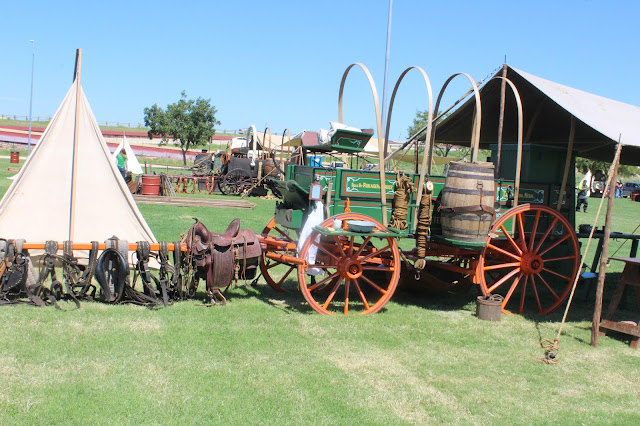On Saturday, September 17 – the 229th Anniversary
of the signing of the U.S. Constitution – I had the privilege of addressing a
DAR Constitution Luncheon at River Crest Country Club in Fort Worth. Members of several chapters of the
National Society of the Daughters of the American Revolution were in
attendance, along with a number of husbands, including several who are members
of the Sons of the American Revolution. There were 106 reservations.
As I entered the club building, I was greeted by patriotic
music from the South Hills High School Orchestra. Decorations in the dining
hall followed the patriotic theme, and I chatted with several ladies I had met
last April, when I addressed the Fort Worth DAR at Shady Oaks Country Club. I
had come at the invitation of Mary Holland Yamagata, a native of Carthage. Mary’s
father, a physician and history buff, was the long-time president of the Panola
College Board of Trustees. Mary’s mother was a local historian and strong
supporter of all of our college programs. My wife Karon and I had a delightful
time at the April meeting, and I was most pleased to be asked back for the
Constitution Luncheon.
 |
| South Hills High School Orchestra |
Opening ceremonies included an invocation, Pledge of
Allegiance to the Stars and Stripes, a group reading of the American’s Creed
and of the Preamble to the Constitution, and the Pledge to the Texas Flag. The
National Anthem was played by the Southwest Christian High School Band, which
continued a patriotic serenade that continued throughout our lunch.
Mary Yamagata, a Regent of the Fort Worth DAR Chapter
provided a gracious introduction for me. My program was, “The U.S. Constitution
– Rule Book for American Freedoms.” I traced the almost accidental accumulation
of our freedoms throughout the colonial period, and I explained how the
Constitution was an outgrowth of our personal liberties and of our free
enterprise economy.
 |
| Southwest Christian High School Band |
In my U.S. History lectures I always emphasized that the
American story is exceptional in the history of the world, and there is no
better example of American Exceptionalism than the remarkable document by which
we have governed ourselves for more than 227 years.
A few days later I brought “The U.S. Constitution – Rule Book
for American Freedoms” to Corsicana, my hometown. On Wednesday, September 21, I
drove to the Kinsloe House, the home of women’s clubs in Corsicana since 1938.
The James Blair Chapter of the DAR held its monthly meeting at the Kinsloe
House on Wednesday of Constitution Week. It has been a rich pleasure for me to
deliver programs to various groups at Kinsloe House through the years. I
always see old friends and, on occasion, relatives. Indeed, one of my daughters,
Dr. Shellie O’Neal, is head of the Drama Department of Navarro College in
Corsicana. Shellie has performed on a number of occasions at the Kinsloe house,
and she joined us for lunch.
 |
| With Mary Lou McKie |
 |
| With Dr. Shellie O'Neal |























